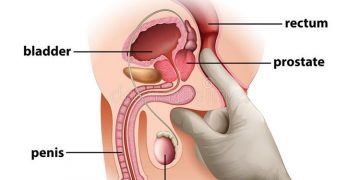The World Health Organization (WHO)Trusted Source as of now perceives four SARS-CoV-2 VOCs:
Alpha B.1.1.7, first recognized in September 2020 in the United Kingdom
Beta B.1.351, first identified in May 2020 in South Africa
Gamma P.1, first identified in November 2020 in Brazil
Delta B.1.617.2, first recognized in October 2020 in India
Infections need a host to imitate and change. The best way to stop new and more hazardous variations of SARS-CoV-2 from arising is to forestall transmission and contamination.
SARS-CoV-2 repeats faster in unvaccinated individuals and, consequently, the infection has greater freedom to change. As these people have not currently fostered a safe reaction to the infection, it can endure and duplicate for longer timeframes in their bodies.
The greater chance SARS-CoV-2 needs to cause disease in unvaccinated people, the higher the opportunity for new VOCs to arise.
In late exploration, researchers from the National Institute for Communicable Diseases (NICD) in Johannesburg, South Africa, close by different establishments in the nation, recognized and talked about another potential Variant of Interest called C.1.2.
Since its underlying revelation in May 2021, researchers have distinguished the C.1.2 variation in seven different nations, including New Zealand, the U.K., and China. While it has a few attributes that might cause concern, specialists are as yet assembling information.
A new report researching the variation shows up on the preprint server, medRxiv.
Transformations
Utilizing hereditary investigation, the review creators note that C.1.2 contains numerous changes additionally present in the Alpha, Beta, Delta, and Gamma variations of SARS-CoV-2. The scientists express these transformations make it simpler for the infection to enter target cells, oppose current medicines and antibodies, and pass starting with one individual then onto the next.
“Scientists are worried about the variation, in view of how rapidly it has transformed: it is somewhere in the range of 44 and 59 changes from the first infection recognized in Wuhan, [China] making it more changed than some other WHO-distinguished VOC or Variant of Interest,” said Dr. Vinod Balasubramaniam, senior instructor at Monash University of Malaysia, who was not associated with the review.
“It likewise contains numerous transformations that have been related with expanded contagiousness and an uplifted capacity to avoid antibodies in different variations,” the researchers said, “however they happen in various blends, and their effects on the infection are not yet completely known,” he added.
As the variation has had only a couple of months to course, information on how it works is restricted. Nonetheless, the scientists announced that instances of the variation have expanded as of late at a comparable rate to the Beta and as of now predominant Delta variations as they spread in South Africa.
In May, C.1.2 represented 0.2% of genomes sequenced, in June, 1.6%, and in July, 2.0%.
The specialists likewise note there is generally a deferral of 2 a month among inspecting and information being freely accessible. This, close by constraints in their inspecting limit, may mean the variation is more normal than current information proposes.
Where did C.1.2 come from?
“Infections change to some degree because of a safe assault,” Dr. Cathrine Scheepers, first creator of the review and senior clinical researcher at the NICD in South Africa, told Medical News Today, “When somebody [acquires an infection] with an infection, our antibodies tie onto this infection to kill it and keep it from getting into our cells.
“During disease, the infection will transform arbitrarily. On the off chance that these irregular transformations give an advantage, for example, the capacity to dodge these safe assaults by forestalling immunizer restricting, that change will increment in number, as infections with that transformation enjoy a cutthroat benefit,” she proceeded.
“The more someone [has an infection] with a specific infection, the more possibility it needs to collect a lot of changes. Since this genealogy (C.1.2) is so exceptionally changed, we conjecture it is a consequence of a delayed disease permitting the infection to aggregate numerous transformations prior to being sent to other people,” she added.
Would it be advisable for us to be concerned?
“This moment, there is no requirement for general society or wellbeing specialists to be worried about the C.1.2 variation,” Dr. Scheepers told MNT. “In spite of the fact that we are observing it intently, we are still just identifying it at exceptionally low levels in South Africa (under 3% of infections in the nation) and internationally (under 1% in different locales).”
Dr. Richard Stanton, a peruser in the Division of Infection and Immunity at Cardiff University in the U.K., who was not associated with the review, told MNT, “right now, it merits watching out for, yet not one to be excessively stressed over.”
He proceeded, “The quantity of cases remains genuinely low, and we don’t have any proof that the specific changes it conveys make it any riskier than Delta.”
Teacher Adrian Esterman, Chair of Biostatistics and Epidemiology at the University of South Australia, who was likewise not associated with the review, remarked: “It is too soon to decide if it is probably going to make serious issues or for sure even take over from the Delta variation.”
“Comparable concerns were communicated about the Iota variation originally recognized in New York, and that was quickly overwhelmed by the Delta variation.”
“Right now, C.1.2 isn’t so much as a Variant of Interest, not to mention a VOC. In this way, I believe that we ought to try to avoid panicking, let the great South African virologists manage their job, and watch cautiously what occurs over the course of the following not many weeks.”
Could C.1.2 overwhelm different variations?
“We’ll need to keep a watch out,” said Dr. Stanton. “Some early information propose that C.1.2 is being beaten by Delta, yet it’s too soon to say without a doubt.”
Dr. Scheepers added: “It is still too soon to determine what this variation will do. Right now, it doesn’t appear to surpass Delta, which is as of now prevailing in South Africa. Delta additionally stays the transcendent variation all around the world.”
“We keep on checking this infection for proof of stamped increments just as performing testing in research centers around South Africa, explicitly finding out if C.1.2 would have the option to out-contend Delta. We desire to have the aftereffects of those tests soon,” she proceeded.
Will antibodies secure against the C.1.2 variation?
“Since C.1.2 shares a comparable change profile as Beta and Delta, we are genuinely sure that immunizations will, in any case, be defensive against hospitalization and demise against the C.1.2 variation as they have been against the Beta and Delta variations,” said Dr. Scheepers.
Dr. Paul Griffin, Associate Professor of Medicine at the University of Queensland, says: “It has not yet been set up whether this variation does for sure have any of the properties that will make it a VOC — examinations concerning this are continuous.”
“The conversation around this new variation ought to build up to why keep on doing what we can to decrease the worldwide weight of this infection, most strikingly making progress toward high antibody inclusion around the world,” he clarified.
He additionally said that we should “stay cautious concerning essential disease control systems, including the utilization of hand cleanliness, social removing, veils, and having high paces of testing and segregating of positive cases anyplace viable.”
How might we shield against C.1.2?
“Equivalent to different variations — antibodies!” said Dr. Stanton. “Joined with conduct measures, for example, social removing, ventilation, and veil wearing when inside and in closeness to one another.”
Dr. Scheepers added: “similar mediations as those being utilized for any remaining variations will probably secure against this one, as well.”
“For instance, we strongly prescribe that individuals get inoculated to secure against extreme sickness. Nonpharmaceutical mediations, like the wearing of covers, cleaning and cleaning up, maintaining a protected separation, and keeping away from swarms, are successful against all variations.”
























































Discussion about this post